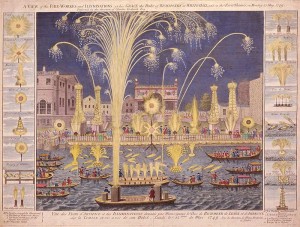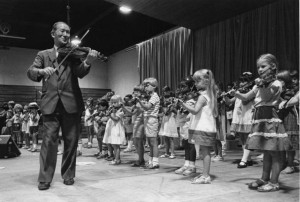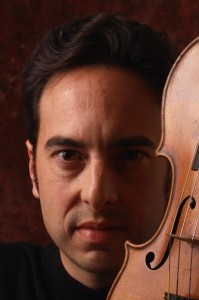The beginning of a new year is a great time to evaluate our practicing and to reaffirm our commitment to consistent, thoughtful practicing. How we practice is as important as how much we practice. Here are some tips to keep in mind:
1. Practice Every Day
In some ways, practicing is like exercise. If it’s sporadic you won’t see progress and you’ll be constantly frustrated. When practicing becomes a part of your daily routine, your practice sessions become easier. You begin to develop muscle memory and one skill builds on another. Progress and momentum follow. Dr. Suzuki said that for every day you don’t practice you need to practice two days to catch up. “Only practice on the days that you eat.” was his famous advice.
2. Organize Your Time
Understand each component of your practice session and its purpose. In the first Suzuki books a typical practice session should include Suzuki’s Tonalization exercises, your new piece and review. More advanced students might similarly divide their time between scales, etudes, unaccompanied Bach, concerto, sonata, show pieces and orchestra music. Each component helps your playing in a different way.
As you become more comfortable with a new piece, continue to practice small sections of the piece slowly, but also spend some time “performing” the piece by playing through from beginning to end without stopping.
3. Identify Your Objective
Make sure you always understand specifically what you’re trying to accomplish. Be goal oriented and focus on only one point at a time.
4. Use Your Time Efficiently and Intelligently
Practicing almost always involves problem solving. Identify the problem and then consider the most efficient and effective way to solve it. If you have difficulty with a musical passage, don’t immediately play it again. Instead, stop and ask yourself why it isn’t working. It may involve a string crossing, a shift or questionable intonation. After you have identified the problem, focus only on its solution. This usually involves starting in the middle of the piece and only repeating a small group of notes. Stop and isolate each action, whether it be a string crossing or setting fingers on the fingerboard. After repeating it correctly many times, back up and play the passage again in context. It’s important to be able to start anywhere in a given piece.
5. Stay Mentally Alert
Listen carefully and evaluate your playing throughout your practice session. Be as tough on yourself as your teacher is at your lesson. Every time you go on autopilot and allow a sloppy string crossing or out of tune note to pass you are ingraining that habit. By listening and solving the problem quickly, you save yourself time in end.
6. Imagine What You Want It To Sound Like
Let the piece play in your mind like a recording. How do you want it sound? Put the bow on the string and play. Then evaluate what you played, making adjustments if necessary. Always stay positive and evaluate after you have played.
7. Stay Relaxed
Relaxation is the key to all technique. Focus on four points of relaxation, isolating each separately before you play: the right shoulder, right elbow, right hand and the knuckles of the left hand.
For less advanced students, always go through a posture checklist before starting to play. Place the bow on the string and take a moment to feel the connection and relaxed arm weight.
Throughout your practice session, keep renewing a soft, springy feeling in your left hand and bow arm.
8. Slow Down
This is especially true when learning a new piece. Find the tempo where it feels easy and focus on your most full, beautiful tone. Stay calm and relaxed. If you find yourself scrambling for notes, evaluate what is happening. Usually, this is a sign that you are not making the most efficient physical motions possible. This, in turn makes it harder and you risk building a habit of tension. Think about a relaxed “roof” over the fingerboard and fingertips that stay close to the strings and try again.
Dr. Suzuki asks beginners learning a new piece to use short, small bow strokes and to stop between each note to prepare the left hand. Practicing this way reinforces the appropriate coordination (the left hand preparing first). It also ensures that mind and muscles have time to learn and remember the correct finger patterns. Students who try to go too fast and skip this step often end up ingraining wrong notes that have to be unlearned later. There is also a danger of sloppy coordination between the right and left hands.
There are times when it can be beneficial to play a piece at full tempo (or even faster than the performance tempo) before you are ready. However, as a general rule slow practice is essential.
9. Do Many Correct Repetitions
Whatever we repeat becomes a habit. To improve we must replace old, inhibiting habits with new and correct ones. Dr. Suzuki said, “Knowledge is not skill. Knowledge plus 10,000 repetitions creates skill.” Those who worked with Suzuki have suggested that he intended this not as hyperbole, but rather quite literally! In his book, Outliers: The Story of Success, Malcolm Gladwell suggests something similar.
10. Always Play Your Best
Because what you repeat becomes a habit, it is essential that you never let down. Don’t settle for anything less than your best. Always turn the energy switch on and practice with your best tone and most inspired musicianship.




